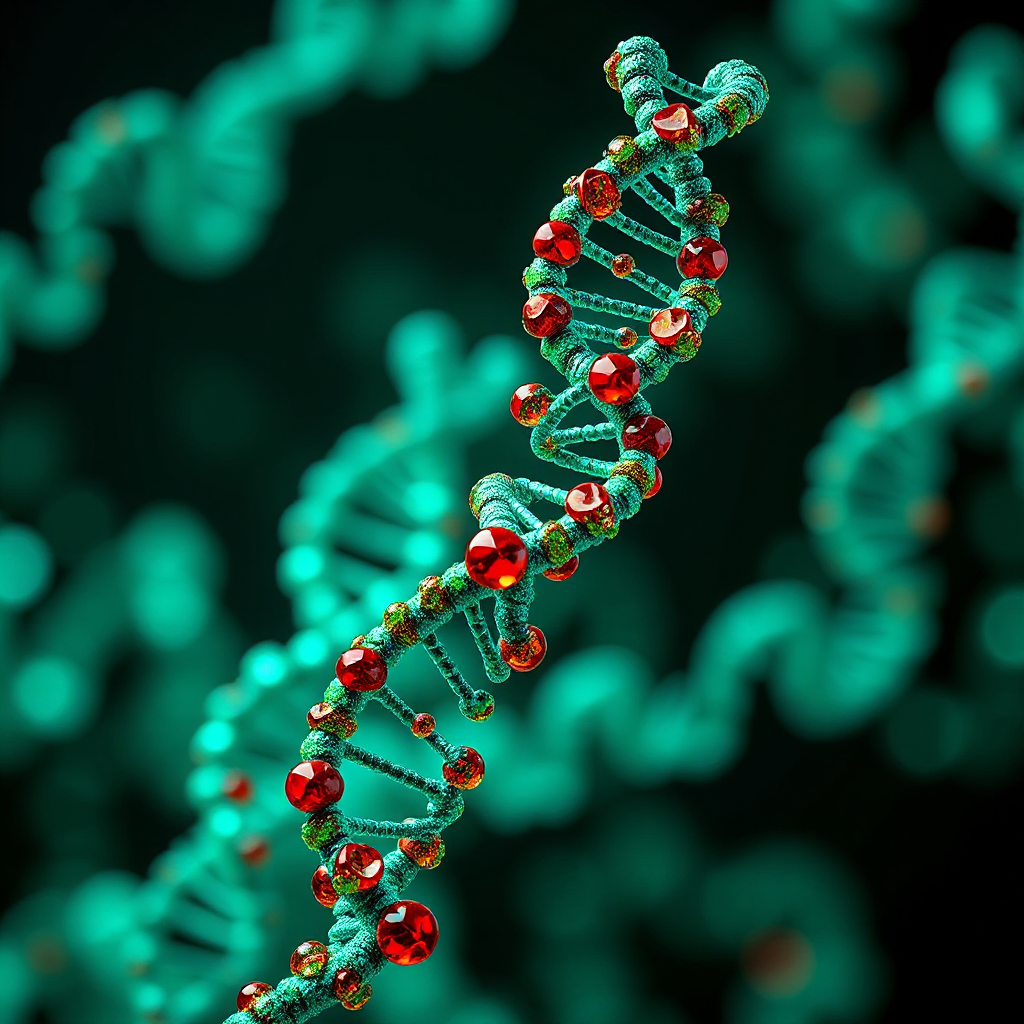What is Gene Therapy and How Does It Work

Gene therapy is a groundbreaking medical technique that modifies or manipulates your genes to treat or prevent diseases. It focuses on addressing the root cause of genetic disorders by targeting faulty or missing genes. Instead of managing symptoms, this approach aims to correct the underlying genetic issues. By altering specific genes, gene therapy offers hope for treating conditions that were once considered untreatable. Scientists continue to refine this method, making it a promising tool in modern medicine.
Key Takeaways
Gene therapy helps fix faulty genes to treat diseases. It focuses on the main cause, not just symptoms.
There are different ways to do gene therapy. These include adding genes, turning off bad genes, or editing genes. Each method solves genetic problems differently.
Gene therapy can be done in two ways. In vivo means putting genetic material directly into the body. Ex vivo means fixing cells outside the body, then putting them back.
Some gene therapies are approved by the FDA. They help treat diseases like hemophilia, spinal muscular atrophy, and some cancers.
Gene therapy can provide long-term fixes and fewer treatments. But it has risks, like immune system problems and ethical questions.
How Gene Therapy Works

Mechanisms of Gene Therapy
Gene therapy uses different mechanisms to modify or manipulate genes. These mechanisms include gene addition, gene silencing, and gene editing. Each method works in a unique way to address genetic issues. The table below explains these approaches:
Method | Description |
|---|---|
Gene addition | Inserts a new copy of a gene into cells, enabling the production of a specific protein. |
Gene silencing | Transfers genetic material to inhibit the activity of an existing gene, reducing protein production. |
Gene editing | Modifies DNA by altering or deleting elements, correcting the protein produced by the DNA. |
These techniques allow scientists to target the root cause of genetic disorders. For example, gene addition can help replace a missing or faulty gene, while gene editing can correct errors in the DNA sequence.
Delivery Methods
Delivering genetic material to the right cells is a critical step in gene therapy. Scientists use two main delivery methods: in vivo and ex vivo.
In Vivo
In vivo gene therapy delivers genetic material directly into your body. Scientists often use viral vectors, which are modified viruses, to carry therapeutic DNA sequences to target cells. These vectors replace harmful viral genes with therapeutic ones, ensuring safety. Lipid nanoparticles are another tool used to deliver RNA-based therapies. This method is ideal for treating conditions where cells cannot be easily removed from the body.
Ex Vivo
Ex vivo gene therapy involves removing cells from your body, modifying them in a laboratory, and then returning them. This approach allows for precise control over the genetic changes made to the cells. For instance, scientists can use gene editing tools to correct faulty genes before reintroducing the cells. Ex vivo therapy is commonly used for blood disorders and immune system conditions.
Both methods have shown promising results in treating diseases like inherited blindness and neuromuscular disorders. As research advances, these delivery techniques continue to improve, making gene therapy more effective and accessible.
Applications of Gene Therapy

FDA-Approved Gene Therapies
Gene therapy has made significant strides, with several treatments receiving FDA approval. These therapies target a variety of conditions and represent groundbreaking advancements in medicine. Some notable examples include:
ROCTAVIAN (2023): Treats hemophilia A using AAV5 technology.
SKYSONA (2022): Addresses cerebral adrenoleukodystrophy with modified cell therapy.
TECARTUS (2020): Targets mantle cell lymphoma with autologous cell therapy.
ZOLGENSMA (2019): Treats spinal muscular atrophy using AAV9 technology.
LUXTURNA (2017): Corrects retinal dystrophy with AAV2-based therapy.
These therapies highlight the potential of gene therapy to transform treatment approaches for complex diseases.
Conditions Treated by Gene Therapy
Genetic Disorders
Gene therapy offers hope for individuals with genetic disorders by addressing the root cause of these conditions. For example, it has successfully treated inherited immune deficiencies like Adenosine deaminase (ADA) deficiency. In this case, scientists modified blood stem cells with a functional ADA gene, significantly improving immune function. This approach reduces the need for ongoing treatments and improves quality of life.
Cancer and Immune Disorders
Gene therapy has revolutionized cancer treatment by enhancing the immune system's ability to fight tumors. Scientists have developed CAR T cell therapies, which train your immune cells to detect and destroy cancer cells. These therapies have shown success in treating leukemia, lymphoma, and multiple myeloma. Emerging technologies like CRISPR-Cas9 are also being explored to improve outcomes for cancer and immune disorders.
Rare Diseases
Rare diseases often lack effective treatments, but gene therapy is changing that. For instance, it has been used to treat conditions like Fabry disease, Gaucher disease, and GM1 gangliosidosis. The table below highlights some examples:
Disease | Description |
|---|---|
Fabry disease | Delivers a working GLA gene into cells to treat this condition. |
Gaucher disease | Addresses harmful glycolipid buildup with gene therapy. |
GM1 gangliosidosis | Uses a viral vector to deliver a working copy of the GLB1 gene. |
Leukodystrophy | Includes disorders like cerebral adrenoleukodystrophy (CALD) and metachromatic leukodystrophy. |
Pompe disease | Treats glycogen storage issues caused by a faulty GAA gene. |
Gene therapy continues to expand its reach, offering hope for individuals with rare and complex conditions.
Benefits and Risks of Gene Therapy
Gene therapy offers transformative possibilities, but it also comes with challenges. Understanding its benefits and risks helps you make informed decisions about this innovative treatment.
Benefits
Addressing Root Causes
Unlike traditional treatments that manage symptoms, gene therapy targets the root cause of diseases. By correcting faulty or missing genes, it addresses the underlying problem. For example, therapies for genetic disorders like ADA deficiency replace defective genes, restoring normal function.
Long-Term Solutions
Gene therapy provides lasting benefits for many patients. For instance, individuals with Wiskott-Aldrich syndrome experienced significant improvements years after treatment. Symptoms like infections, eczema, and autoimmunity decreased, while immune cell populations stabilized. The FDA recommends long-term follow-up studies to monitor these outcomes, ensuring sustained health improvements.
Reducing Ongoing Treatments
Traditional therapies often require repeated administration. Gene therapy, however, can reduce or eliminate the need for ongoing treatments. This approach not only improves convenience but also enhances quality of life. Patients with conditions like spinal muscular atrophy have benefited from single-dose therapies that deliver lasting results.
Risks
Side Effects and Immune Reactions
Gene therapy involves introducing genetic material into your body, which can trigger immune responses. These reactions may reduce the therapy's effectiveness or cause side effects. Ensuring the safe integration of genes into your DNA remains a critical challenge.
Cost and Accessibility
The high cost of research and development makes gene therapy expensive. Treatments often target rare diseases, limiting their availability. Patients face financial barriers, and healthcare systems struggle to balance affordability with innovation.
Ethical and Long-Term Concerns
Gene therapy raises ethical questions. Deciding which traits to modify or whether to use it for non-medical purposes sparks debate. Concerns about accessibility may lead to social inequality. Additionally, regulating its use to prevent misuse is essential for maintaining public trust.
Gene therapy holds immense promise, but addressing these risks is vital for its widespread adoption.
Consulting a Healthcare Provider About Gene Therapy
Eligibility for Gene Therapy
Genetic Testing and Diagnosis
Determining your eligibility for gene therapy begins with genetic testing. These tests identify whether you have specific genetic mutations that can be treated with this approach. To qualify, the test results must demonstrate clinical validity and utility. This ensures that the therapy is both effective and necessary for your condition.
Insurance coverage often depends on these results. Reimbursement decisions consider factors like clinical guidelines and the purpose of the test. For example:
Tests must show evidence-based utility to secure coverage.
The complexity of reimbursement varies by payer type and legislative mandates.
Genetic testing also helps healthcare providers stratify patient populations. This means they can identify which individuals are most likely to benefit from gene therapy. Discussing these tests with your doctor is an essential first step.
Exploring Treatment Options
Risks, Benefits, and Alternatives
When considering gene therapy, you should discuss its risks, benefits, and alternatives with your healthcare provider. This treatment aims to correct genetic abnormalities by introducing functional genes into your cells. However, it carries potential risks, such as:
Unanticipated inflammatory responses.
Organ failure.
The possibility of the modified virus reverting to an infectious state.
There is also a chance that the inserted gene could disrupt other important genes, leading to complications like tumor formation. Despite these risks, gene therapy has shown success in treating conditions like cystic fibrosis and adenosine deaminase deficiency. Exploring alternative treatments and weighing their pros and cons is equally important.
Clinical Trials
Finding and Enrolling in Trials
If you are interested in participating in clinical trials for gene therapy, several resources can help you get started:
Use the ASGCT Clinical Trials Finder to locate open trials.
Search ClinicalTrials.gov for ongoing studies.
Talk to your doctor about trials that match your condition.
Sign up for patient registries to receive updates on research opportunities.
Connect with patient organizations for advocacy and support.
Recent trends in clinical trials show a growing focus on patient-centric approaches. Researchers are addressing challenges like manufacturing complexity and regulatory variability. Collaboration among stakeholders is helping to advance the field and improve outcomes for participants.
Gene therapy represents a groundbreaking approach to treating diseases by addressing their genetic roots. It uses mechanisms like gene addition and editing to correct abnormalities, offering hope for conditions like spinal muscular atrophy and cystic fibrosis. This innovative technology has the potential to transform medicine by providing long-lasting solutions for rare and complex diseases. However, risks like immune reactions and ethical concerns require careful consideration. As research advances, gene therapy continues to evolve, promising a brighter future for healthcare. Consult your healthcare provider to explore if this transformative treatment is right for you.
FAQ
What is the difference between gene therapy and traditional treatments?
Gene therapy targets the root cause of diseases by correcting faulty genes. Traditional treatments often manage symptoms without addressing the underlying genetic issue. For example, gene therapy for spinal muscular atrophy replaces a defective gene, while traditional methods may only alleviate muscle weakness.
How long do the effects of gene therapy last?
The effects of gene therapy can vary. Some treatments provide long-term or even permanent benefits, while others may require follow-up therapies. For instance, single-dose therapies like ZOLGENSMA offer lasting results for spinal muscular atrophy, but ongoing monitoring ensures sustained effectiveness.
Is gene therapy safe for everyone?
Gene therapy is not suitable for everyone. Your eligibility depends on factors like your genetic condition, overall health, and the availability of approved therapies. Genetic testing helps determine if this treatment is right for you. Always consult your healthcare provider for personalized advice.
Can gene therapy treat all genetic disorders?
Gene therapy cannot treat all genetic disorders yet. Scientists focus on conditions with known genetic causes and available delivery methods. Research continues to expand its applications, offering hope for more diseases in the future.
How can I access gene therapy?
You can access gene therapy through FDA-approved treatments or clinical trials. Start by consulting your doctor, who can guide you through genetic testing and eligibility. Resources like ClinicalTrials.gov and patient organizations can help you find trials and support.
💡 Tip: Stay informed about advancements in gene therapy by following trusted medical sources and organizations.
See Also
Understanding Choriocarcinoma: Symptoms, Diagnosis, and Treatment Options
Exploring Extragonadal Germ Cell Tumors: Causes and Development
Anaplastic Large Cell Lymphoma: Overview and Treatment Approaches
Leydig Cell Tumors: Causes, Symptoms, and Treatment Insights
Large Granular Lymphocytic Leukemia: Symptoms and Treatment Explained
